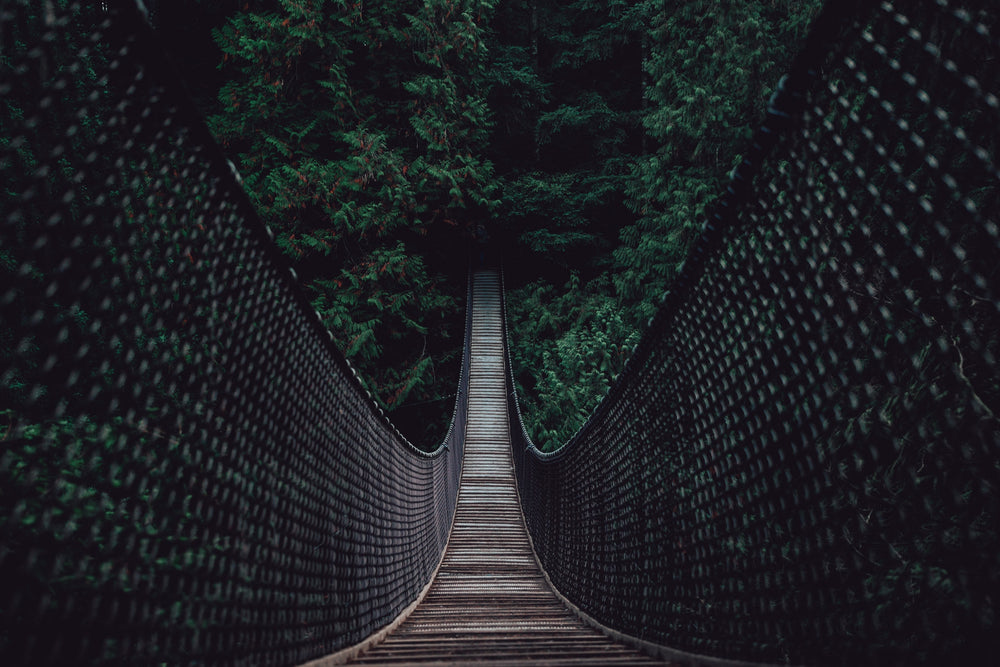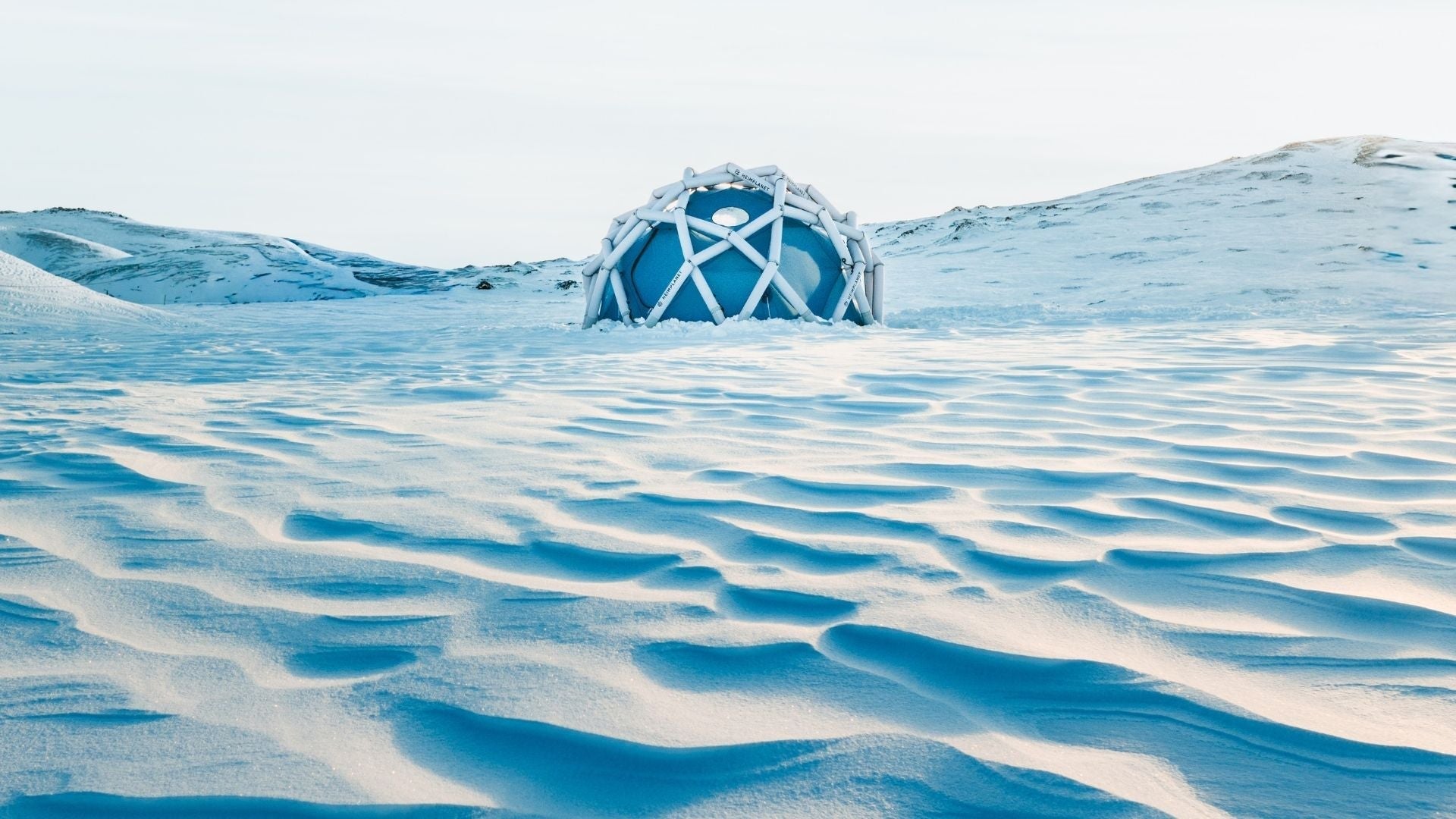MEIN WEG IN DEN PAZIFISCHEN NORDWESTEN
Ich glaube, es sind das Geheimnis und die Vielfalt dieses Ortes, die mich schon immer dorthin gezogen haben. Als jemand, der gerne Zeit in der Natur verbringt und eine abenteuerlustige Seele ist, hat dieser Ort meine Aufmerksamkeit geweckt, seit ich das erste Mal davon gehört habe.

Als kleines Kind gingen wir immer hinaus und bauten diese kleinen Hütten aus Ästen im Wald. Ich verbrachte Tage damit, Wände, Wege und Löcher zu bauen, sogar bei schlechtem Wetter. Auch strömender Regen und Schnee konnten mich nicht davon abhalten, wieder in den Wald zu gehen.
Immer und immer wieder, bis mir schlecht wurde oder die Flasche Tee leer war und ich nach Hause musste. Irgendwie war es dort draußen fast wie ein zweites Zuhause, wo man ganz auf sich allein gestellt ist und sein eigener Schöpfer sein kann - zumindest bis der Förster kam. Als ich älter wurde, verbrachte ich weniger Zeit dort, lernte die strengen Regeln des deutschen Waldschutzes kennen und stellte fest, dass es noch schönere Wälder gibt als den in der Nähe meiner Stadt. Ich habe diesen und andere Wälder fast vergessen, als ich für die Abschlussprüfungen lernen musste.

Es war also wie ein Weckruf, als ich vor ein paar Jahren diese stimmungsvollen Bilder des amerikanischen Pazifischen Nordwestens auf Instagram sah. Zuerst habe ich versucht, diese Bilder in den deutschen Wäldern nachzustellen. Dabei bin ich wieder in den Regen gegangen, habe sogar wieder angefangen, das Wetter zu lieben, wo andere sich nicht einmal nach draußen trauen. Es hat mich zurück in die Natur gebracht und dafür bin ich sehr dankbar.
Ich musste jedoch bald feststellen, dass etwas anders ist. Ich hatte das Gefühl, dass die Bilder des PNW viel intensiver, interessanter, mystischer waren und die Seele des Waldes in seiner reinsten Form zeigten. Damals hatte ich gerade mit der Fotografie begonnen und versuchte, wie gesagt, den Bildstil auf den deutschen Wald zu übertragen. Aber ich habe schnell gelernt, dass es nicht nur auf die Art der Aufnahme oder der Bearbeitung ankommt, sondern vielmehr auf den Ort selbst.
Das ist es, was ein Bild besonders macht. Ein Regenwald am anderen Ende der Welt lässt sich einfach nicht mit einem kleinen deutschen Wald vergleichen, der zwischen einer Autobahn und einem Dorf eingezwängt ist. Gleich nach meinem Schulabschluss wollte ich in die USA und nach Kanada reisen, um diesen spektakulären Ort zu sehen. Ein paar Monate später fand ich mich im Bus zum Flughafen wieder. Es war endlich soweit!

Nachdem wir ein paar Tage in Vancouver verbracht hatten, mieteten wir ein Auto und überquerten die Grenze. Ausgestattet mit allem, was wir für einen Camping-Roadtrip brauchen würden, fuhren wir zur Olympic Peninsula. Nach all den Jahren des Wartens war ich endlich in der Lage, diese Landschaft in natura zu sehen. Auf unserem Weg zum Olympic National Park nahmen wir die Route über den Deception Pass und überquerten den Puget Sound mit der Fähre in Port Townsend.
Am nächsten Morgen begannen wir, unsere Umgebung zu erkunden, und fanden uns in einem riesigen, regenverhangenen Wald wieder. Es war so viel Grün um uns herum - grünes Gras, grüne Bäume, grünes Moos. Wir konnten unseren Augen nicht trauen. Es ist einfach ein Paradies für Pflanzen, weil es so oft regnet. Ich dachte immer, dass die Bilder von hier so bearbeitet wurden, dass die Landschaft grüner und lebendiger aussah, während dies in Wirklichkeit ohne verrückte Bearbeitung der Fall war. Für mich ging ein Traum in Erfüllung, als ich durch die tropfnassen und moosbewachsenen Wälder der alten Regenwälder wanderte.

Eigentlich wollten wir die tief in einem Tal gelegenen heißen Quellen besuchen, aber schon bald war die Straße mit Schildern versperrt und wir erfuhren, dass die Straße durch die starken Regenfälle der letzten Wochen weggespült worden war. Kaum vorstellbar, denn auf der anderen Seite des Nationalparks wüteten immer noch Waldbrände. Anstatt zu den heißen Quellen zu wandern, beschlossen wir, nach Wasserfällen zu suchen, und wir fanden sie schließlich auch. Ein absolutes Highlight, das wir nur durch Zufall entdeckten, als wir am Fluss entlang gingen, waren springende Lachse, die sich ihren Weg flussaufwärts bahnten. Es ist unglaublich, diesen großen Fischen dabei zuzusehen, wie sie mit aller Kraft versuchen, ihre Brutstätten zu erreichen. Eine kleine Menschenmenge wartete darauf, sie nur für ein paar Sekunden zu sehen.

Wir machten nur ein paar kürzere Wanderungen hier und da, da es ständig regnete. Für den Abend suchten wir eine Übernachtungsmöglichkeit am Rialto Beach und stießen auf eine Park Ranger Station, wo wir viel darüber lernten, wie das Nationalparksystem und die Übernachtungsvorschriften funktionieren. Wenn man zum ersten Mal dorthin fährt, ist es schwer zu verstehen, wo man übernachten kann, was man tun muss, welche Formulare man ausfüllen muss und welchen Pass man braucht.
Es gibt auch hier und da Ausnahmen, und manchmal haben die örtlichen Ranger andere Ansichten zu bestimmten Einschränkungen. Es ist also auf jeden Fall gut, mit ihnen zu sprechen, vor allem, wenn du über Nacht bleiben und längere Wanderungen machen willst, denn sie würden auch nach dir suchen, wenn du nach einer bestimmten Zeit nicht bei deinem Auto auftauchst. Oft haben sie auch Campingplätze in der Nähe ihrer Stationen, wo man Wasser auffüllen und duschen kann, ein Bezahlsystem auf Vertrauensbasis. Obwohl wir sie auf unserer Reise nicht genutzt haben, kann ich sie auf jeden Fall empfehlen, wenn man einen günstigen Platz zum Übernachten mit Zelt sucht.

Stattdessen haben wir am Strand gezeltet. Der erste Abend am Strand war sehr windig und es regnete stark. Wir trafen eine der Parkrangerinnen am Strand wieder und sie erklärte uns fröhlich die verschiedenen Vogelarten in der Gegend. Es wurde ziemlich früh dunkel, aber wir blieben noch ein bisschen länger, um ein paar Surfer zu beobachten, die auf die Wellen trafen, die der Wind an die Küste trieb. Eines meiner Lieblingsbilder entstand in dieser Szenerie. Ein Surfer, der nach einiger Zeit im kalten Wasser des Pazifiks müde ist, nimmt sein Brett und geht auf die Lichter von La Push zu. Keine Pose.
Es war einfach ein unverfälschter, rein emotionaler Moment, der festgehalten wurde. Für mich ist Fotografie die Dokumentation eines Moments, den man auf individuelle Weise erlebt hat, und ich mag es sehr, wenn ein Bild Emotionen auslöst. Nicht jeder empfindet Emotionen bei meinen Bildern, und ich empfinde auch nicht bei jedem einzelnen Bild von jemand anderem Emotionen. Aber für mich ist es wirklich wichtig, dass der Fotograf selbst die Emotionen beim Betrachten seiner eigenen Arbeit empfindet und diese Emotionen auf den Betrachter übertragen kann, indem er eine Geschichte erzählt.

Aufgrund des Wetters an der Küste fuhren wir ein wenig ins Landesinnere und übernachteten in einem Nationalforst. Am nächsten Tag erkundeten wir weitere Waldwege und Trails und gerieten in einen weiteren Regenschauer. Am Abend packten wir schließlich unsere Rucksäcke zusammen und machten uns auf den Weg zu einem Strand für die Nacht. Es war der erste Abend seit Tagen, an dem wir einen Sonnenuntergang ohne einen bewölkten Himmel erlebten. Die Küstenlinie des Pazifischen Ozeans um die Olympic Peninsula ist ziemlich rau, riesige Baumstümpfe und Felsen liegen an den Stränden herum.
Wind und Regen haben die Steine und Wälder entlang der Küste geformt, und dazwischen lag ein Holzhaufen. Dort haben wir unser Lager aufgeschlagen, aufgepumpt The Cave und machten ein kleines Lagerfeuer, das vor dem Wind geschützt war. Nach einem atemberaubenden Sonnenuntergang, bei dem wir wie Ameisen herumliefen, um das Lager aufzubauen und Fotos zu machen, gingen die letzten Einheimischen vom Strand nach Hause und wir hatten die Küste für uns allein. Es wurde bald dunkel und wir mussten mehr Feuerholz für das Lager finden. Kurz nachdem wir mit der Zubereitung des Abendessens begonnen hatten, begann es wieder zu regnen und wir suchten Schutz in The Cave.
Weit weg von allen Menschen hörten wir nur das Rauschen der Wellen und den Regen, der auf das Zelt tropfte. Ab und zu hörte man seltsame Geräusche aus dem Wald. Es ist nicht ungewöhnlich, dass man einen Bären, Elche, Hirsche oder andere Tiere zu Gesicht bekommt. Um zu verhindern, dass uns ein Bär besucht, haben wir eine Bärendose mitgebracht. Darin packt man sein Essen während der Nacht und stellt die Dose irgendwo außerhalb des Zeltes ab, damit die Tiere nicht daran kommen und einen auf ihrer Suche nicht angreifen. Die einzigen Tiere, die wir am Strand gesehen haben, waren Krabben, blaue Vögel und ein Eichhörnchen, das versucht hat, unser Frühstück zu stehlen. Nachdem wir uns mit dem Eichhörnchen herumgeschlagen hatten, war es an der Zeit, das Zelt abzubauen, was ziemlich einfach und schnell geht, vor allem, wenn man zwei Personen hat. Ich war überrascht, wie gut es dem starken Wind am Strand standgehalten hat. Wir haben ein paar Steine auf die Leinen gelegt, damit es auf dem sandigen Boden noch sicherer steht.

In den Tagen danach erkundeten wir einige Gebiete der Halbinsel und machten uns auf den Weg zum Mt. Rainier National Park. Aber das ist eine andere Geschichte. Rückblickend habe ich den Aufenthalt in diesem Teil der Welt wirklich genossen. Wenn Sie das Gefühl haben, dass Ihr Aufenthalt irgendwo zu kurz war, dann haben Sie ihn wahrscheinlich genossen und werden irgendwann wiederkommen. Diese erstaunliche Landschaft zum ersten Mal in meinem Leben in natura zu sehen, hat mich wirklich umgehauen und meine Vorstellungen übertroffen. Ich werde den Pazifischen Nordwesten auf jeden Fall bald wieder besuchen!








